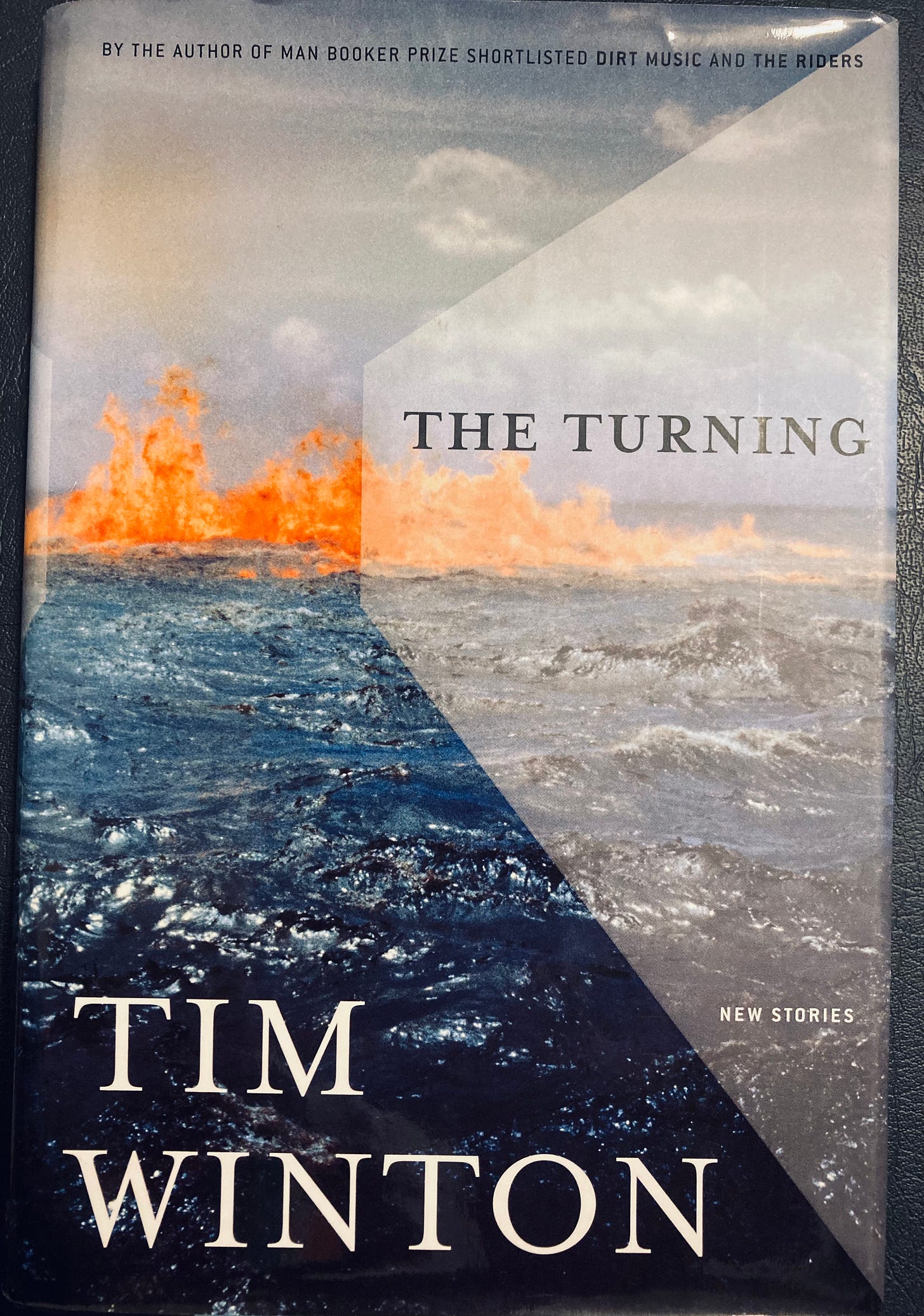Long and Distant Connections in The Turning by Tim Winton
John Carr Walker Sitting In His Little Room No. 104
I’ve been having a good time the last few weeks thinking about connections in novels-in-stories, or whatever term we want to use to describe that kind of hybrid book that’s novelistic in scope but made out of short stories. Mary Rechner and Marjorie Sandor, in Marrying Friends and Portrait of My Mother Who Posed Nude in Wartime, keep the connections tight, immediate. Ander Monson, in Other Electricities, creates looser connections, through association and recurring details. In this John Carr Walker Sitting In His Little Room, I want to think about connections in Tim Winton’s 2004 collection The Turning.
The primary connection in The Turning is the coastline of Western Australia. The landscape is both brilliantly rendered and well-used by the writer. The ocean, the rocky shore, and the harsh weather all contribute directly to the dramas and tensions of the stories, the struggles of the characters. They want to get out. They feel they could never belong anywhere else. They were born here. They don’t want to die here. Physical geography, in Winton’s rich style, becomes psychodrama.
Changes in the landscape—shifts in season, time of day, storms coming in or going out—contribute to the sense of time passing from one story to another. And yet, Winton adds another layer to this, because stories can take place decades apart. Reading stories that cycle from summer to fall to winter, but also jump between the 1960s and now, lends The Turning a somewhat uncanny vibe. I know what’s happening, but something strange feels in play, unspoken in the stories, but built in to the connections between them.
Family is a secondary connection in The Turning. Often, the gaps between stories bridge family ties: father to son, sister to brother, and so on. The shifts in time, and the collection’s disordered chronology, means that we might see two characters of the same age back to back, even though they are separated by generations. This too adds to the unsettled, slightly uncanny atmosphere.
And yet, not every character in The Turning is family. Not every character is connected to another character, and not every story is a piece of the puzzle. Some stories (I think; more on why I’m hedging in a moment) are connected to others only through shared landscape. Everything else—names, events, consequences—stand alone, contained within one particular story. I say I think some stories stand alone because Winton likes to hide his connections. A character might be revealed as the father of another character, for example, only through hints and slight gestures. Some connections are only uncovered (at least in my case) when I kept track of surnames, given names, nicknames, and birth names. Unlike Rechner and Sandor, who take pains to make connections between characters and stories explicit, Winton asks (expects? demands?) I do the work myself.
I’m a bad notetaker. My sense of what’s important, and what’s not, is pretty poor until I’ve got the big picture in place. I might appreciate Winton’s puzzle-y method of connections more if my instincts were better, but they’re not, so I don’t. It comes down to a matter of trust. I trust Rechner and Sandor to point me toward what’s important to know, but I feel like Winton’s trying to fool me, being a clever boy at my expense. I expected to feel like this reading Monson’s Other Electricities, but Monson’s regular refrains mitigated that feeling. In The Turning, the recurring landscape is not enough to assuage my growing suspicion I’m missing something.
Which begs an important question: does it matter if I miss something? Surely I miss things all the time as a reader. Of course I do. Allusion, word play, in-jokes—literature is thick with things that go over my head. Perhaps the trouble is that The Turning has enough clear connections to alert me to their presence, but not enough clear connections to satisfy my own expectations. It bothers me that most stories are connected but some are not. It makes the book seem untidy, unfinished, or rather, over-finished, as if it contains stories that should have been edited out. When I’m searching for what’s not there, I’m not going to have the pleasure of finding it.
That’s my problem, though, not Winton’s. I do like The Turning, despite what I make it sound like. I recommend Tim Winton’s books in general, and The Turning in particular, to my creative writing students. There’s a great deal to be learned from what he does and does not do. A great deal of that learning is about the kind of writer we want to be, the kind of books we want to write, and the kind we don’t.

